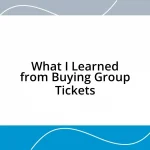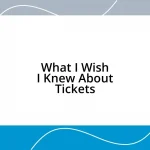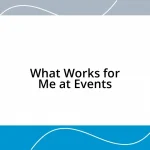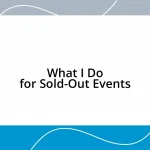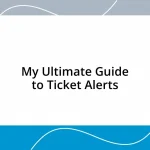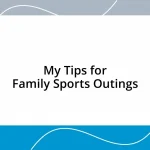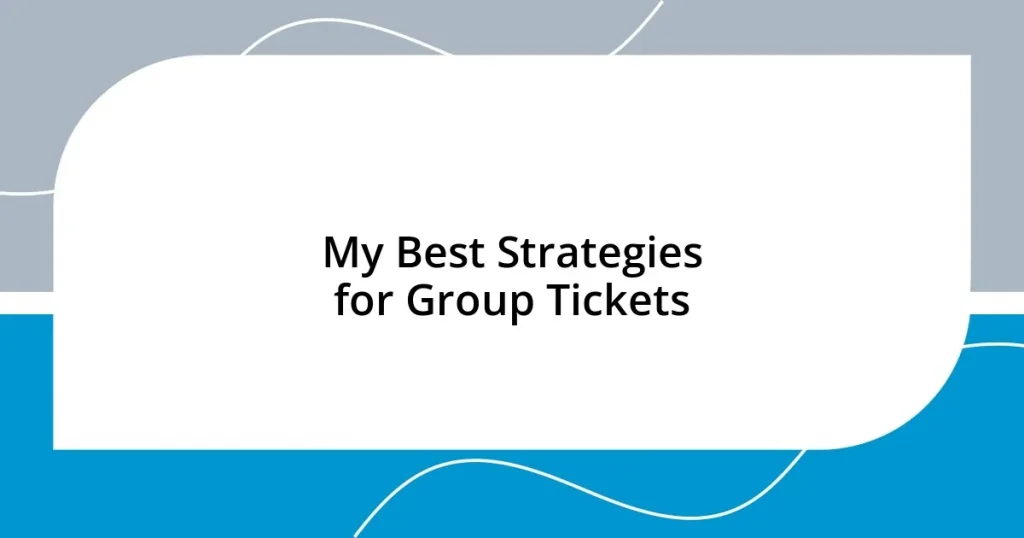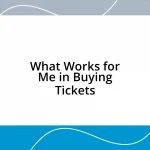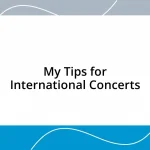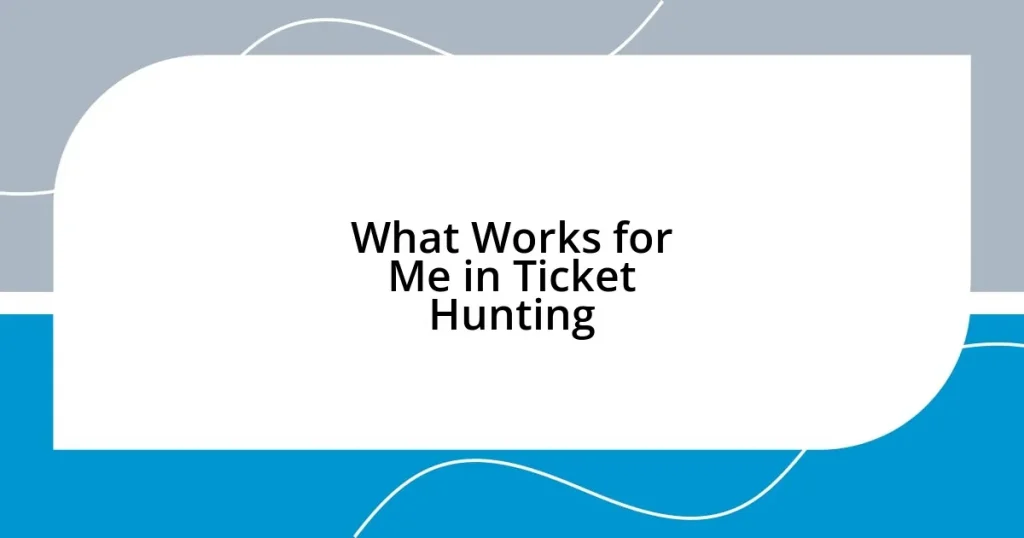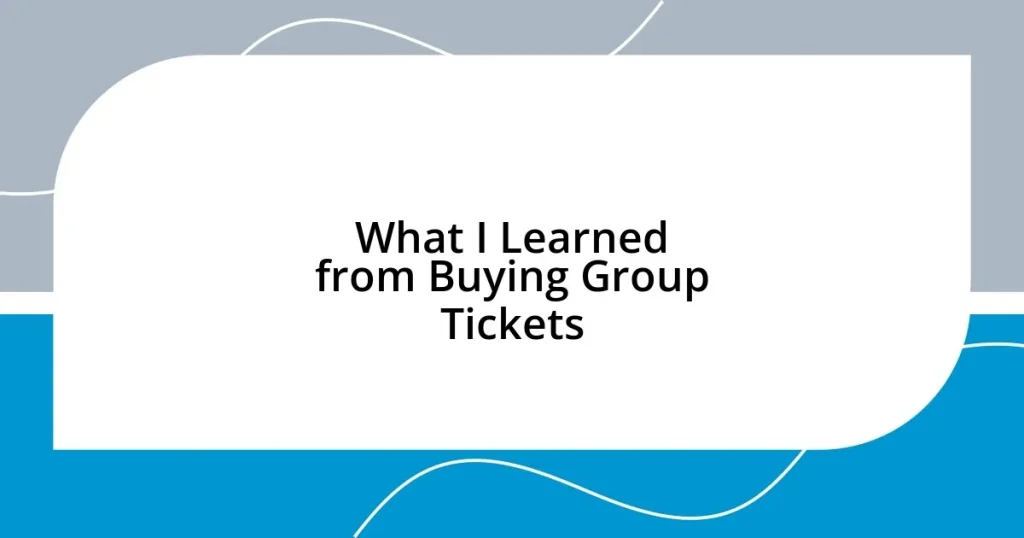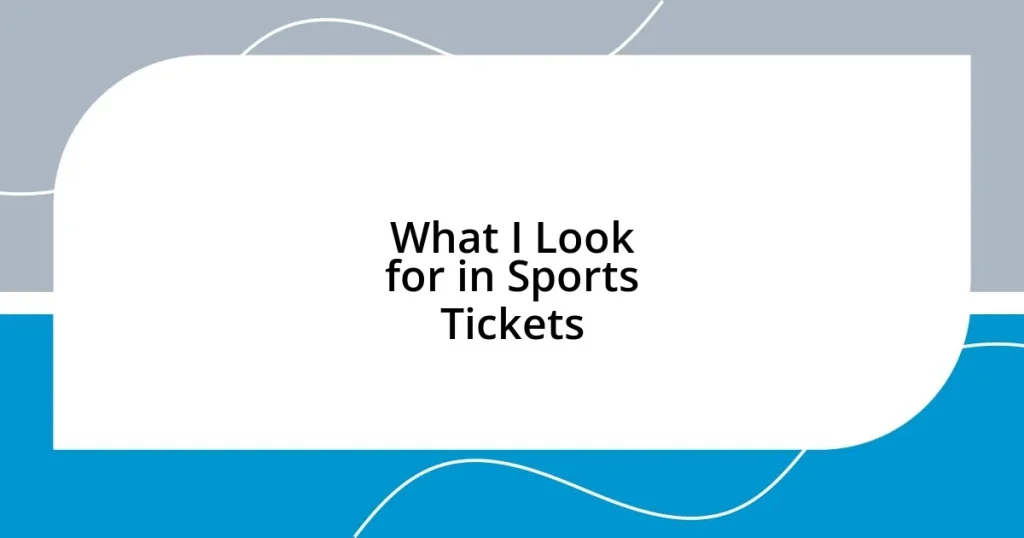Key takeaways:
- Group tickets offer benefits such as discounts, convenience in coordination, and exclusive perks like prime seating and refreshments.
- Ideal group sizes vary: smaller groups (5-10) promote intimacy, while larger groups (20+) provide better discounts and shared excitement.
- Choosing the right event involves considering group interests, location, timing, budget, and experience level to enhance engagement.
- Effective coordination and communication are vital for group purchases, including planning for unexpected changes and creating shared excitement through activities.
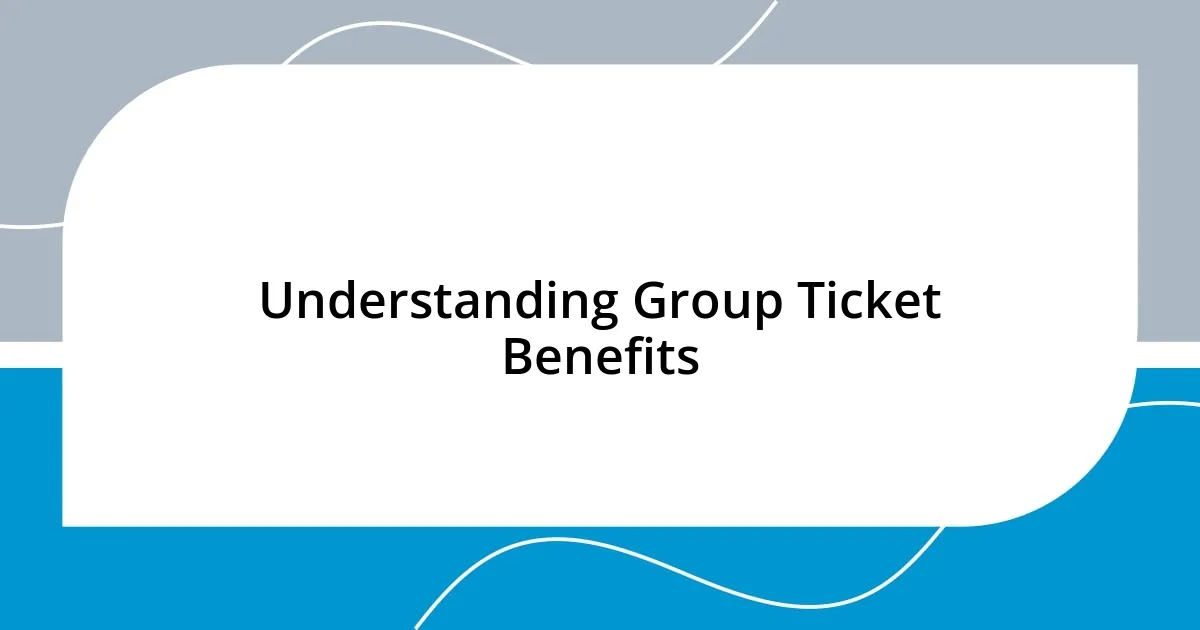
Understanding Group Ticket Benefits
When it comes to group tickets, the benefits can be quite compelling. For instance, I remember planning a trip to a concert with my friends. We scored a significant discount on our tickets because we bought them as a group. It’s amazing how these savings can foster a sense of camaraderie and excitement—after all, who doesn’t love getting a good deal while making unforgettable memories?
Another advantage I’ve found is the convenience that comes with group ticketing. Think about coordinating entry for a large party; it can be chaos without a plan. I often opt for group tickets because they streamline the process, allowing us to enter together and soak in the atmosphere without the stress of individual arrangements. Have you ever faced the hassle of losing track of friends in a crowd? These tickets can save you that frustration.
Lastly, many venues offer perks such as exclusive seating or priority access for groups. In my experience, this added layer of privileges enriches the event. I once attended a theater production where our group not only enjoyed prime seating but also received complimentary refreshments! Moments like that remind me why group tickets can enhance our overall experience, making it a win-win situation.
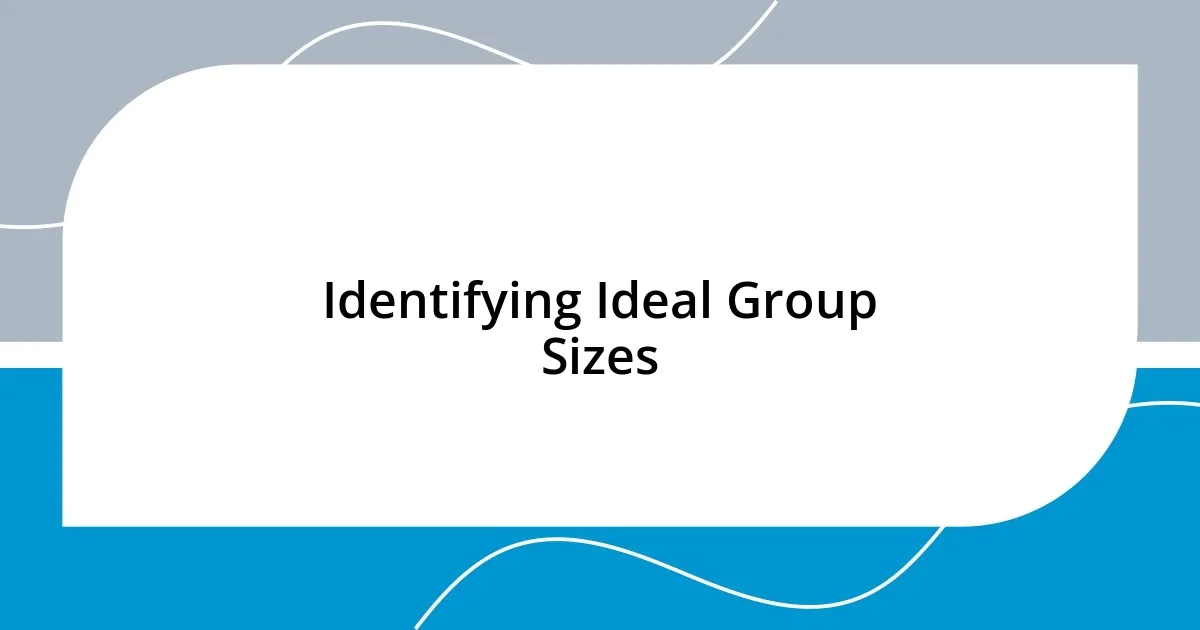
Identifying Ideal Group Sizes
Identifying the ideal group size is crucial for maximizing the benefits of group tickets. Personally, I’ve noticed that smaller groups, typically around 5-10 people, feel more intimate. When I attended a festival with a close-knit group of seven friends, we could easily move around, share experiences, and even snag the best food vendors without much hassle. This size not only made coordination effortless but also heightened our enjoyment of the festival atmosphere.
On the other hand, I’ve found that larger groups can also have their advantages, especially when it comes to discounts. I once helped organize a family reunion at a theme park, where we gathered over 20 relatives. The thrill of all ages experiencing rides together was unforgettable, and we secured a fantastic group rate. However, managing such a large crowd requires careful planning to keep everyone engaged and to avoid losing track of attendees.
Ultimately, the ideal group size depends on your goals for the experience. Whether you’re looking for a more meaningful connection with a few friends or a lively gathering of many, understanding what each size offers will help you create lasting memories.
| Group Size | Benefits |
|---|---|
| Small (5-10) | Intimacy, easier coordination |
| Large (20+) | Better discounts, shared excitement |
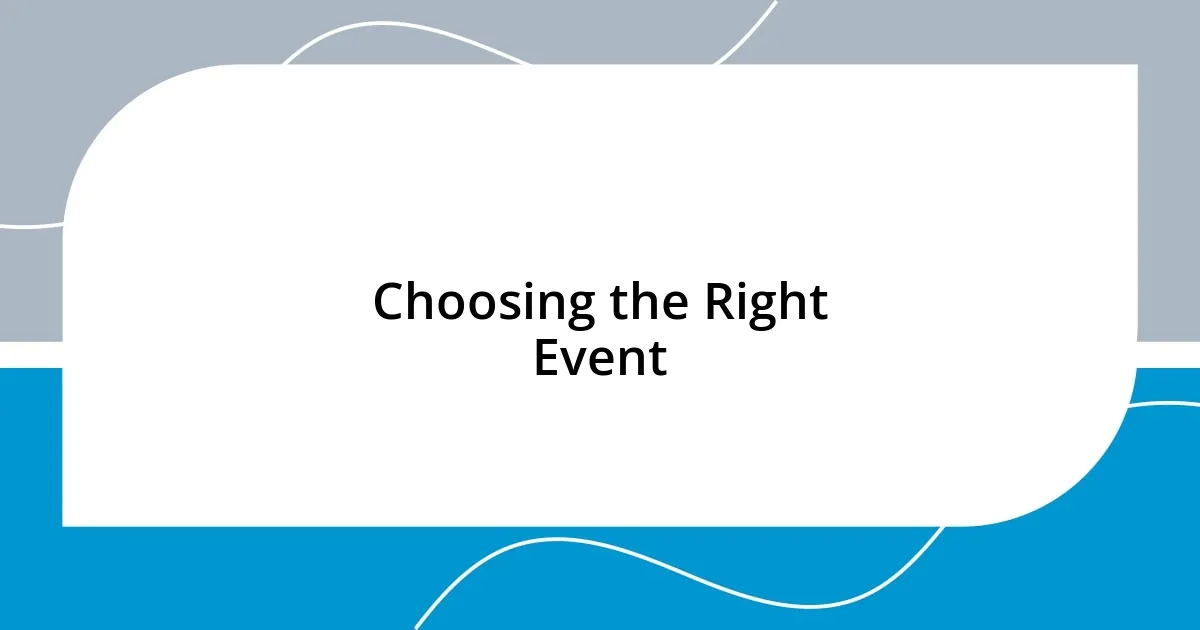
Choosing the Right Event
Choosing the right event is a pivotal step when considering group tickets. I’ve learned that aligning the chosen event with the interests of your group can make or break the experience. For example, I once picked a concert that I loved, but my friends weren’t as enthusiastic. As a result, the excitement dwindled, and I felt guilty that I didn’t take their preferences into account. It taught me to ask my friends what they’d enjoy before sealing the deal.
Consider these factors when selecting the right event:
- Interests: What activities or genres excite your group?
- Location: Is the venue accessible for everyone involved?
- Timing: Are there scheduling conflicts, or is it a time that maximizes attendance?
- Budget: Does the event match your group’s budget without compromising on enjoyment?
- Experience Level: Is this the first experience for some members, and how can you make it memorable for them?
By keeping these aspects in mind, choosing the right event can be a delightful process rather than just a task on the to-do list. I remember a planning session for a sports event where we debated between attending a game versus going to a concert. Ultimately, we opted for the game, and the shared thrill of the competition became one of our favorite memories together. It’s this level of engagement that reinforces the joy of group outings.
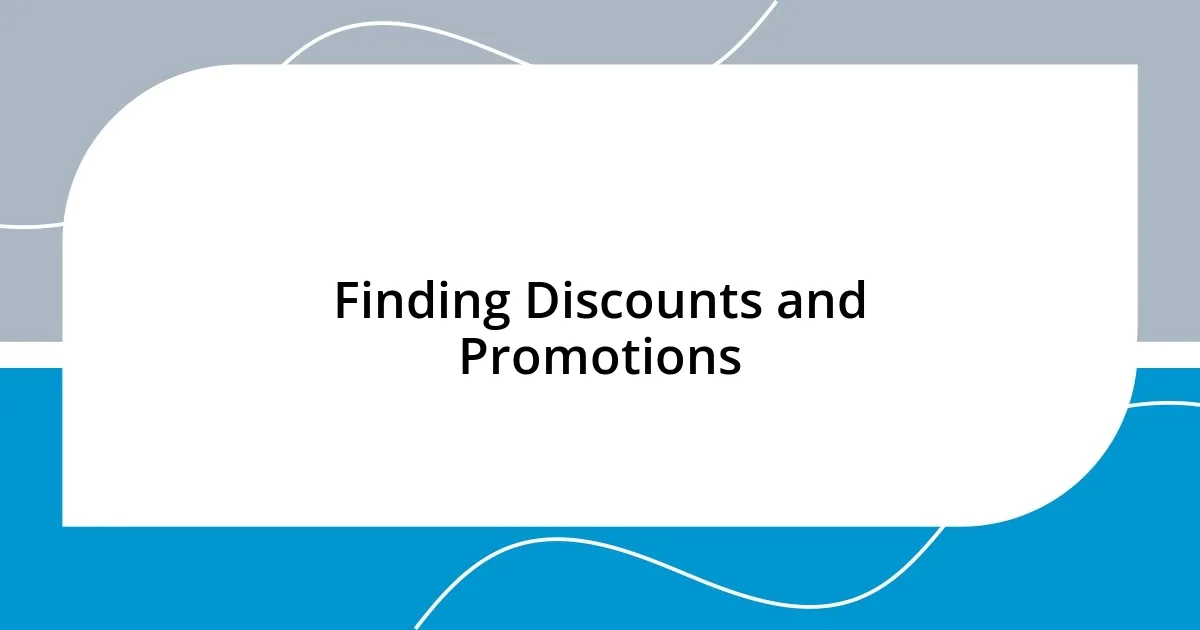
Finding Discounts and Promotions
Finding discounts and promotions for group tickets can feel like a treasure hunt, but it’s worth the effort. One key strategy that I’ve found helpful is to subscribe to newsletters from venues and ticketing services. Often, they offer exclusive promotions and early access to deals for subscribers. Just last summer, one email alert led me to an unexpected 30% discount on group tickets for a local theater performance, which made our night out much more affordable and enjoyable.
Another effective approach is to check social media platforms, especially the pages of event organizers or venues. I remember scrolling through a venue’s Instagram and stumbling across a flash sale for group tickets. The excitement of sharing that news with my friends was contagious! It not only saved us money but also created a buzz of anticipation as we planned our outing.
Lastly, don’t underestimate the power of asking directly. Whether it’s a venue, festival, or amusement park, a simple phone call or email could unveil hidden discounts. I once reached out to a museum about hosting a school trip and ended up learning about a special rate for educational groups. The fact that they were willing to accommodate us was not only a financial win but also made the whole process feel more personalized. So, are you willing to put in a little legwork to save a lot? The rewards can be truly worth it!
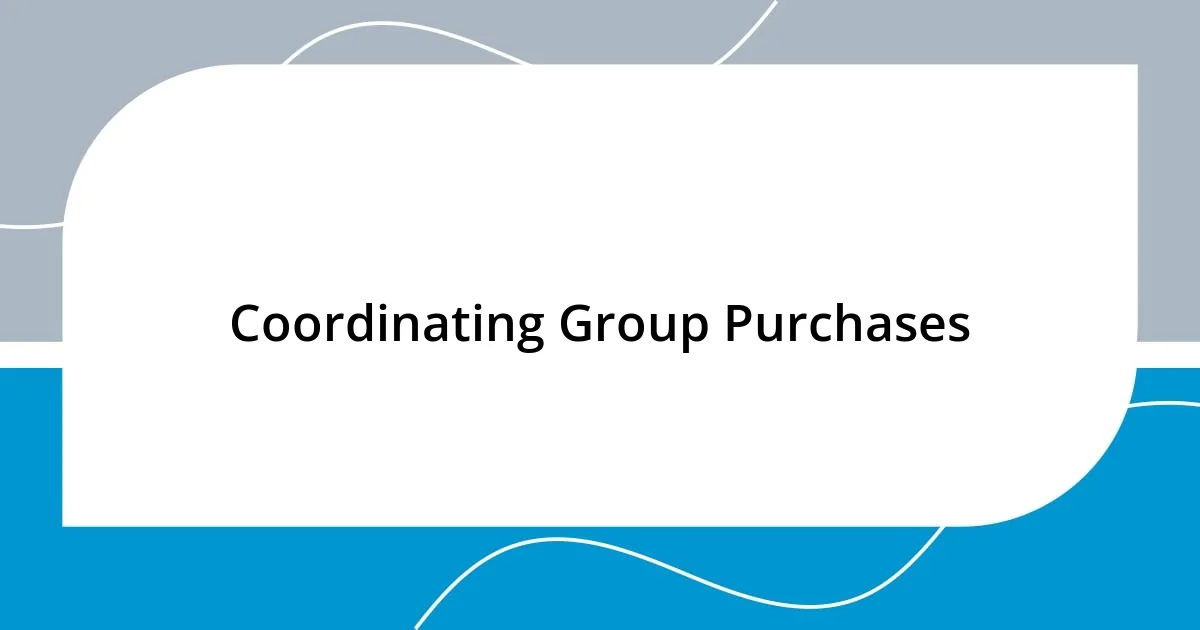
Coordinating Group Purchases
Coordinating group purchases is all about communication and organization. I remember the first time I tried to rally a group for a major concert; it felt like herding cats! Setting a clear deadline for everyone to respond made a world of difference. Once I had a headcount, I created a shared spreadsheet, making it super easy for everyone to see who was in and who wasn’t. That clarity helped us all stay on the same page.
I’ve also found it helpful to designate a point person for collecting funds. This can alleviate the stress of managing multiple transactions. During a recent trip to an amusement park, I stepped up as the financial organizer. I established a simple system through a payment app, which allowed everyone to send their share effortlessly. There was no awkwardness—everyone was more willing to commit because they could see the transparency in the process.
But what happens when someone can’t afford their ticket or has to back out last minute? It’s important to discuss a plan for these situations beforehand. I’ve been in scenarios where unexpected changes occurred, and we conducted a quick group chat to find a replacement. It not only saved our group dynamics but also alleviated any last-minute stress. Ultimately, ensuring everyone feels included and valued can make all the difference in your group outing experience.
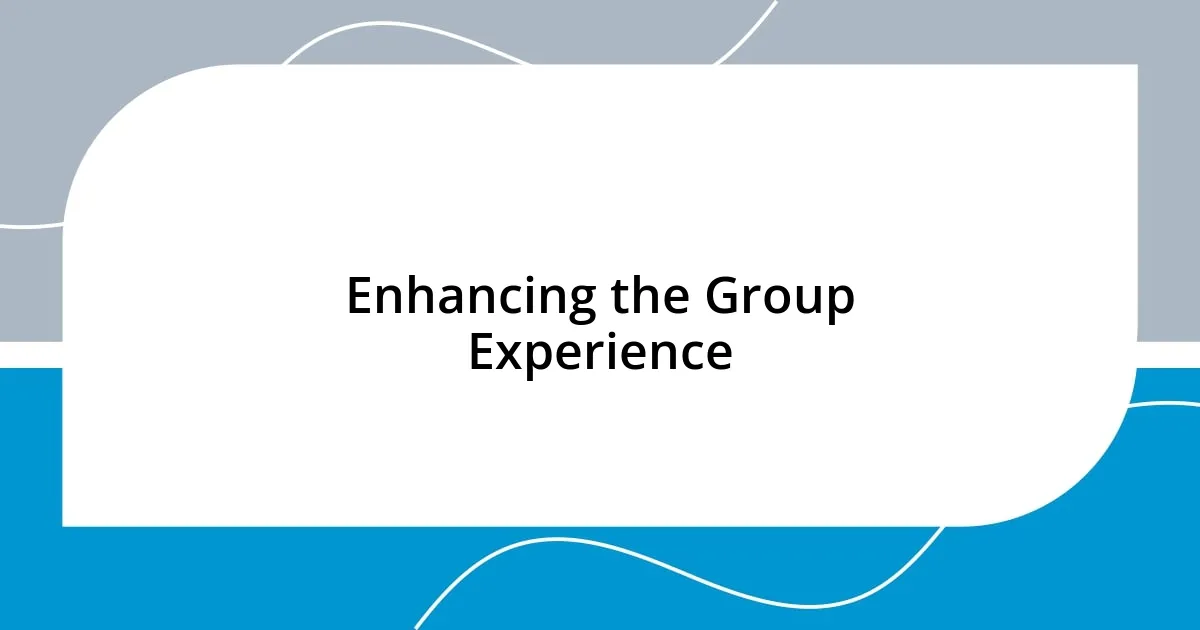
Enhancing the Group Experience
When it comes to enhancing the group experience, nothing beats creating a shared sense of excitement and anticipation. I remember planning a surprise birthday outing for my friend at an escape room. Instead of simply going with the flow, I set up a countdown and shared little hints about the adventure ahead. Seeing everyone’s reactions heightened the sense of engagement and made our time together even more memorable. Isn’t it amazing how a little planning can transform an ordinary outing into something special?
Another aspect of building a great group experience is incorporating activities that foster connection. Once, for a trip to a local amusement park, I organized a mini photo scavenger hunt. Everyone was grouped in pairs, tasked with finding specific attractions and capturing fun moments. Not only did we laugh and bond over our challenges, but those memories were solidified through our shared photos. It was a joy to see how the initiative brought us closer together. Have you ever tried adding a creative element to your group outings? It can really elevate the experience!
Finally, don’t underestimate the value of after-event debriefs. Following that amusement park trip, we had lunch at a nearby café and shared our favorite moments. This simple act of reflection kept the excitement alive long after the day ended, nurturing our friendships in the process. I’ve learned that taking the time to share thoughts and feelings about our experiences can lead to deeper connections. So, how do you typically wrap up a group experience? It could be the key to enriching your future outings!
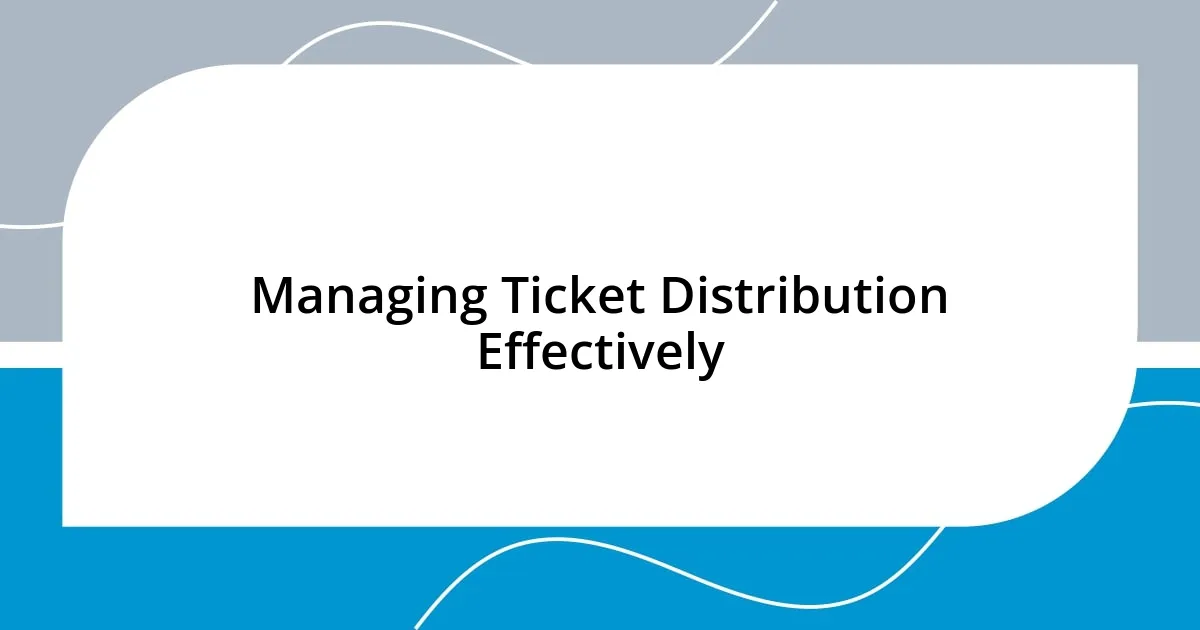
Managing Ticket Distribution Effectively
Managing ticket distribution effectively requires a clear approach and a sense of responsibility. I remember planning a trip to a concert with friends. After gathering everyone’s ticket preferences, I quickly realized I needed a way to track payments and ticket statuses. So, I set up a simple group chat where everyone could update their payment status. It not only kept things organized but also created a space for excitement as we shared our anticipation leading up to the event.
Another crucial aspect is establishing a fair system for ticket allocation. Have you ever faced the situation of someone in the group hogging the best seats or not contributing fairly? During a school event, I implemented a lottery system for ticket distribution. This ensured that everyone had an equal chance to get the best seats. It turned out to be an enjoyable way to build excitement while promoting fairness. Plus, it sparked fun discussions on who might end up with the coveted front-row tickets.
Lastly, flexibility is key when managing ticket distribution. Sometimes, despite our best efforts, plans change unexpectedly. I recall a time when a friend had to drop out last minute. Instead of panic, I had already created a waiting list. This proactive approach not only filled the spot quickly but maintained the group’s enthusiasm. It’s essential to have a backup plan; it can truly keep the good vibes going. How do you navigate the ever-changing dynamics of group ticketing? That awareness can make a significant difference in your overall experience.


